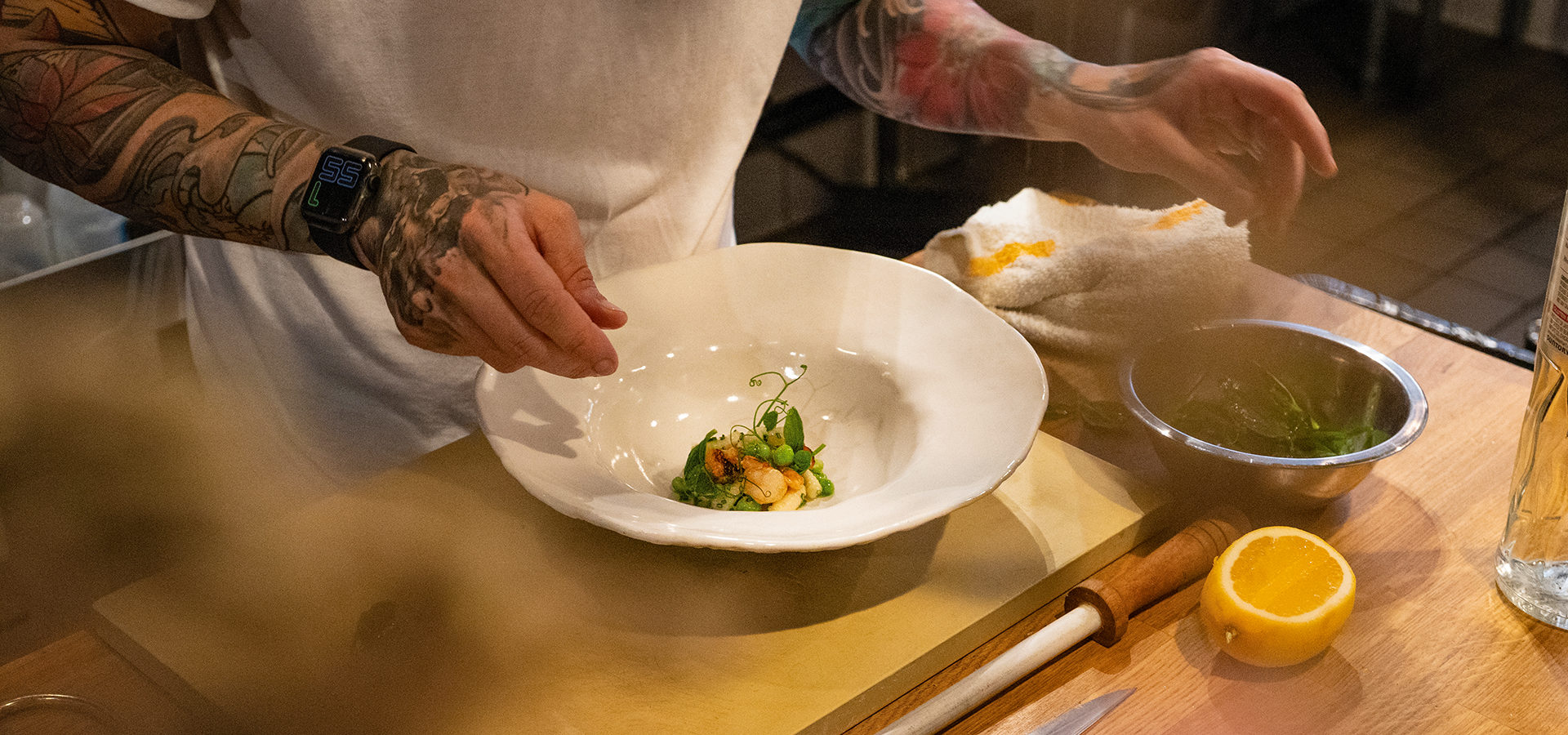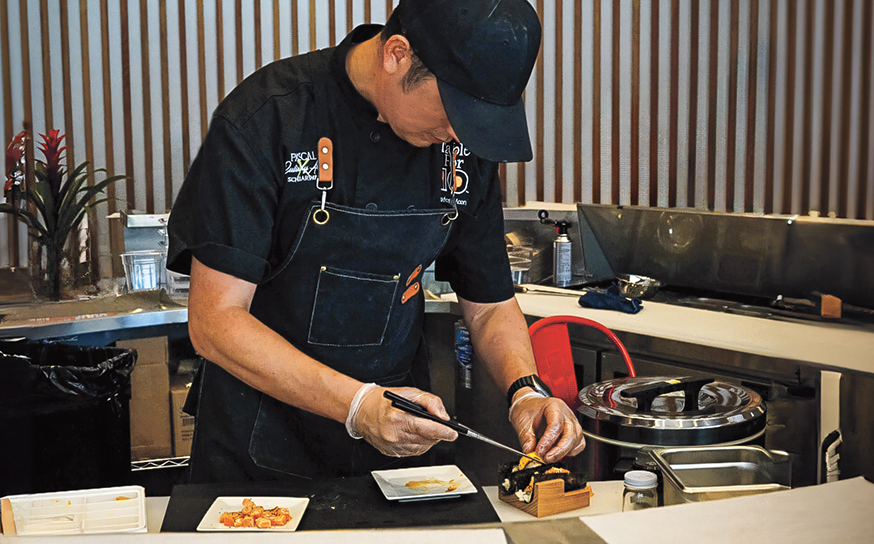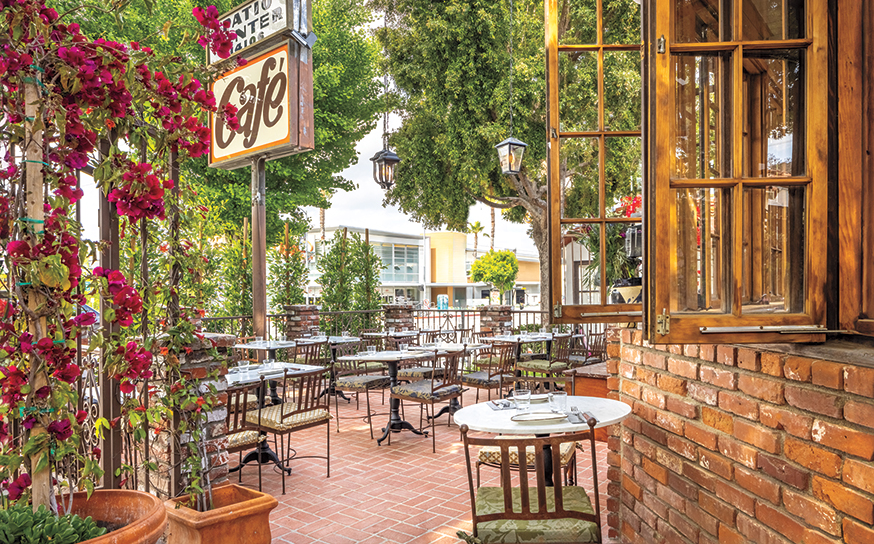Two Valley Eateries Get the Coveted Michelin Star
360-degree world class experience.
-
CategoryEat & Drink, People
-
Written byJean Trinh
-
Photographed ByLiam Brown
When a Michelin Guide camera crew arrived at Pasta|Bar in September, it was under the pretense that they would be interviewing the Encino restaurant team about the return of the awards to California after a year’s hiatus due to the pandemic.
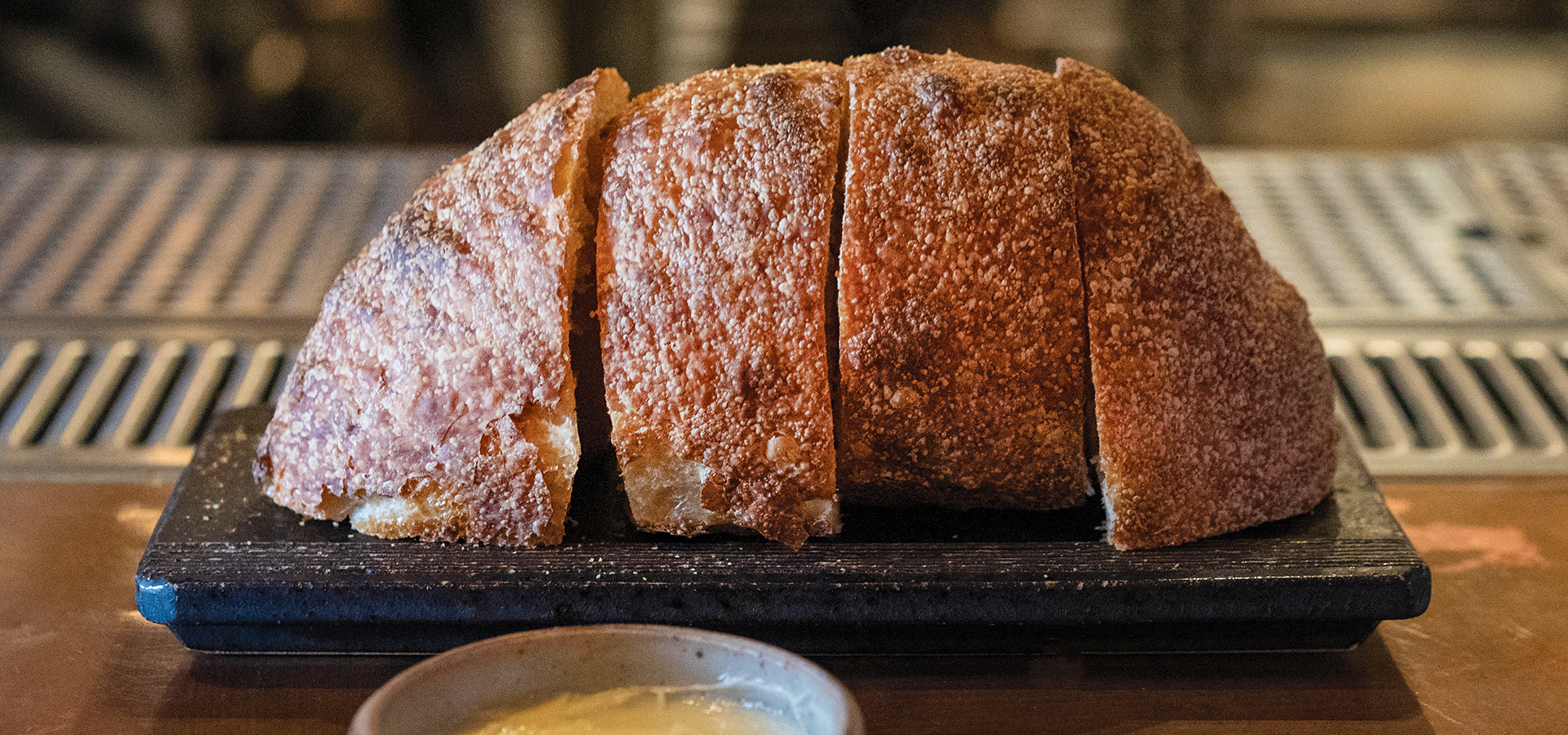
Above: Margarita’s fresh-baked sourdough bread at Pasta|Bar
•••
So it came as a complete surprise to owner Phillip Frankland Lee and his squad—which includes his pastry chef wife, Margarita Kallas-Lee, and executive chef Nate Tauer—when Michelin revealed that they had actually won a star and they were really there to film the winners’ reactions. Not only that, the institution bestowed the husband-and-wife duo a star for another one of their restaurants: Sushi|Bar in Montecito. That one is helmed by Phillip’s brother, chef Lennon Silvers-Lee.
“I started crying,” Phillip recalls when he heard the news. He was in Austin at the time of the filming and was on Zoom video. Margarita was at Pasta|Bar with their team and says they were all “in shock. It was really cool to have everyone there, so every single person on the team was able to hear the news.”
Receiving the accolade had been a lifelong goal of the chef, an Encino native who’s had stints at other Michelin-starred restaurants like Alinea.
“Did I believe that I would have achieved my goal one day? Of course. If you don’t believe in yourself, then there’s no point in trying. And I not only believe in myself, I believe in us as a team, a company, and everybody who’s a part of it,” Phillip says.
The Pasta|Bar concept features an upscale tasting menu that, as Phillip explains it, is their interpretation of Italian food through the lens of farmers market seasonality. It’s an intimate experience, with just 16 seats and an open kitchen counter format. Like the chef’s other two Valley restaurants, Sushi|Bar and the temporarily closed Scratch|Bar & Kitchen, Pasta|Bar is tucked away on the upstairs level of a low-key shopping plaza. Chefs and cooks each bring out and introduce elegantly plated dishes like ocean trout rolled in an everything-bagel spice, and slices of charred Wagyu steak paired with a Korean-inspired fried dumpling.
Phillip considers the Michelin Guide to be the gold standard of the fine dining world. “I wanted to be the best in the world, and the only way you can be recognized as the best is if you get a Michelin star,” he says.
The Guide, which has been run by the French tire company since 1900, returned to Los Angeles in 2019 after unceremoniously leaving for nearly a decade. Its then-director Jean-Luc Naret said the reason for its departure was that “the people in Los Angeles aren’t foodies.”
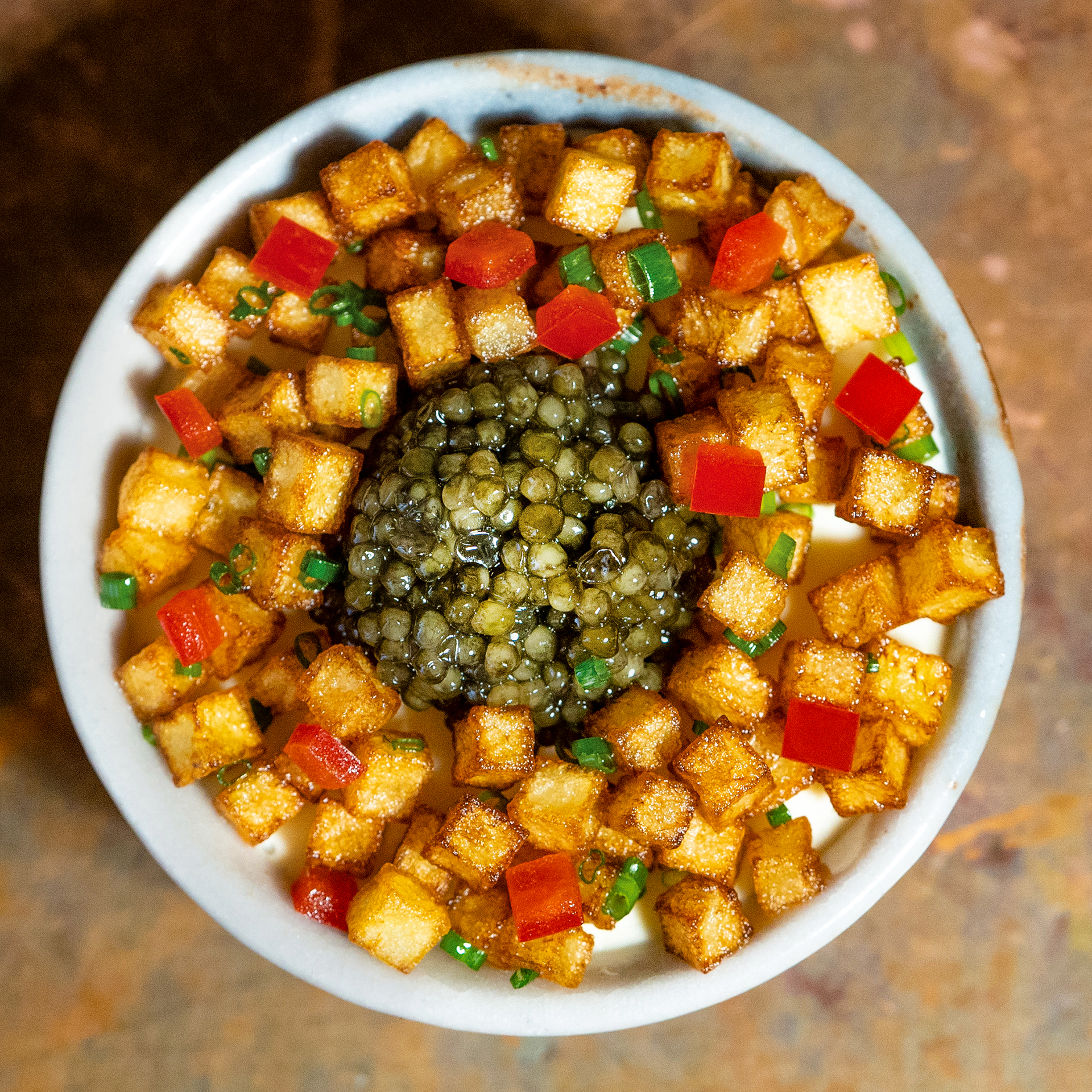
The Pasta|Bar experience includes farm fresh seasonal produce, and artistic handmade pasta dishes.
An official with the Visit California tourism board was quoted as saying that after it partnered with and paid Michelin $600,000 to expand its presence beyond San Francisco to all of California, Michelin brought the guide back to LA in 2019.
Michelin’s anonymous inspectors use a three-star rating system, and award other merits like Bib Gourmand (what they consider to be good food at more reasonable prices) and Plates (for restaurants that have “very good food” but aren’t in the aforementioned categories), when they judge restaurants. While revered by well-heeled travelers and foodies, there are chefs, restaurateurs and food critics who have differing opinions about what it ultimately means to win a Michelin star and what it does for a business.
“If you don’t believe in yourself, then there’s no point in trying. And I not only believe in myself, I believe in us as a team, a company, and everybody who’s a part of it.”
Chefs can face immense pressure after making it in the guides, often having to keep up with customers’ high expectations. Chef Skye Gyngell said in a 2012 interview with the Sydney Morning Herald that it ended up being a curse that she received a star at London restaurant Petersham Nurseries Cafe. “Well, since we got the star we’ve been rammed every single day, which is really hard for such a tiny restaurant. And we’ve had lots more complaints.”
Chef Marco Pierre White renounced his three stars for his eponymous London restaurant in 1999, while chef Sébastien Bras asked Michelin to leave his starred Le Suquet in France out of the 2018 guide for similar reasons.
Los Angeles Times restaurant critic Bill Addison doesn’t always agree with the Michelin Guide, but “as someone who loves Los Angeles dining, I’m happy for whatever attention restaurants can garner,” he says. “It’s been such a challenging moment during an ongoing pandemic.”
The only other Valley eatery to receive a Michelin star this year was second-time winner Shin Sushi, also housed in an unassuming Encino strip mall. The eight-seater, with omakase experiences, is run by chef-owner Taketoshi Azumi, who takes a poetic approach to nigiri, featuring cuts of tai (sea bream), iwashi (sardine), and sweet shrimp.
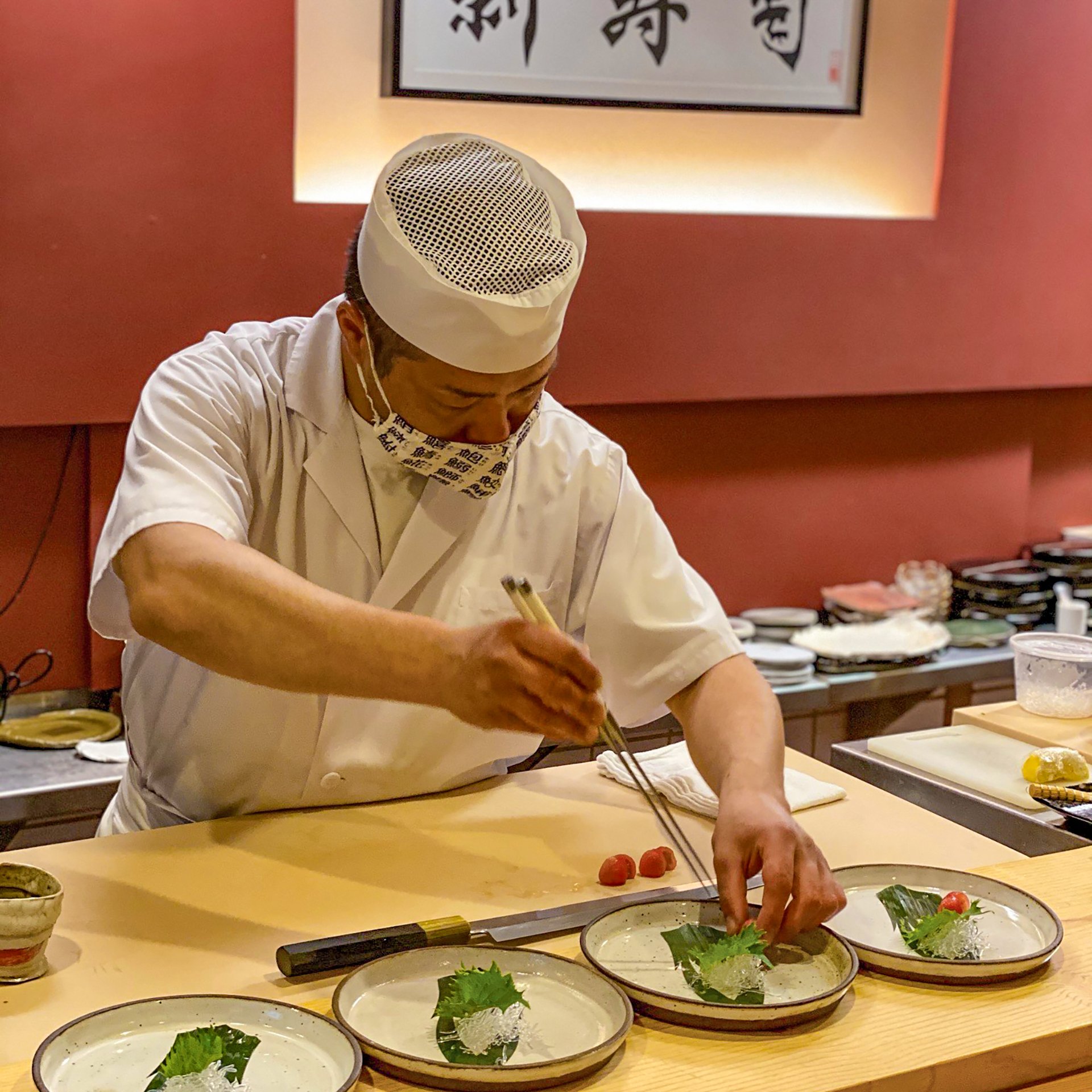
Taketoshi Azumi at Shin Sushi
“There’s an obvious wealth of sushi excellence all over the Valley, but in its really close, minimal attention to seasonal nigiri—it’s simply beautifully presented—Shin Sushi deserves more attention than it gets,” Bill Addison says.
Azumi was taken aback when he first received a Michelin star for Shin Sushi two years ago. “We just opened this restaurant in July 2018 and we received a star in 2019. I started as a sushi chef in Japan, and it has been over 20 years. I was honored to receive one Michelin star for my own restaurant.”
Keeping up the stars can be difficult, but once a restaurant receives one, it can mean returns for future business. Take Asanebo, a sushi restaurant with omakase offerings in Studio City. Chef-owner Tetsuya Nakao opened the spot in 1991 and snagged Michelin stars in 2008 and 2009.
“Unfortunately, we didn’t get any stars this year, but people still recognize this restaurant as having a star,” says Asanebo manager Kunio Kaji, who’s been at the eatery for nearly a decade. “They come here for that reason, that they heard from somebody that this place got a star before.”
Phillip Frankland Lee says he’s already seeing the immediate effects, noting that seatings have sold out for future months. Pasta|Bar, which debuted at the height of the pandemic with makeshift seating on the mall’s second-story communal patio, came out of the need to fill an empty space and keep his staff employed.
He admits it had been a challenge dealing with the slow nights. “But now with this, it just takes us to a level that can allow us to operate a little bit more comfortably.”
Matthew Kang, who’s been Eater LA’s editor for seven years and prefers local food reporting over Michelin’s anonymous style of reviewing, has seen the difference a star can make. “A lot of restaurants need that Michelin star because that means that they’re going to get a constant supply of international travelers and people traveling from across the U.S. that feel like, ‘As Michelin-starred place, it’s probably a good restaurant.’”
Getting stars can be a bright spot during this still-dim time. “I don’t think it’s an easy thing to do: maintaining your business, trying to keep your staff, and paying rent and bills,” Asanebo’s Kunio says. “For those who are actually able to get a star even during that hard, COVID time, they should really feel proud of themselves.”
Join the Valley Community






